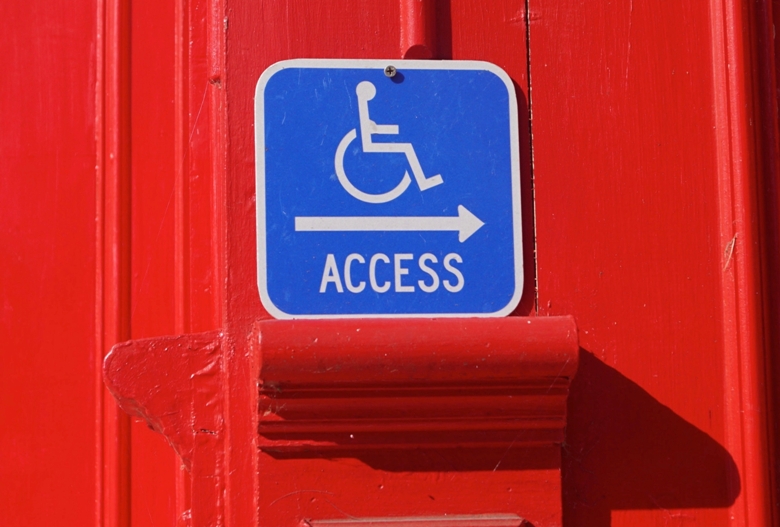The Centers for Disease Control and Prevention (CDC) data confirmed that as of 2024, over 1 in 4 Americans have a disability. Despite this staggering statistic and the 4 million plus Californians with disabilities sharing a home with one of Disney’s largest parks, the family entertainment and media company has announced some significant transformations to its Disability Access Service (DAS) program. The overhaul of their former policy restricts eligibility to visitors with developmental disabilities. Modifications, which went into effect on May 20th at Walt Disney World and June 18th at California’s Disneyland, have raised significant concerns not only for the California disability community but also made waves nationally and even globally in disability communities, leaving many asking Disney to reverse the changes. These same communities, advocates, and supporters are up in arms over potential violations of the Americans with Disabilities Act (ADA) and other related laws. Critics of the shift in policy are arguing it discriminates against individuals with non-developmental disabilities, potentially limiting their access to necessary accommodations. Further, the far-reaching and impactful change shadows a more excellent ongoing debate about inclusivity and accessibility at large-scale public venues and entertainment complexes.
DAS and The New Policy
Disney’s program was designed to assist guests who could not remain in conventional queues due to disabilities. However, per the latest policy, only guests with developmental disabilities such as autism will qualify for DAS. The change came aimed to curb alleged abuse Disney claimed was accruing. Disney explained they saw the use of these services spike and even triple. Social media “line hacking” videos do support the claims that individuals were taking advantage of disability-related services and policies. However, the new criteria exclude many individuals with non-developmental disabilities who also struggle with longer wait times in queues at the parks.
ADA and Legal Concerns
 The ADA prohibits discrimination against individuals with disabilities. The ADA Section 302 (Prohibition of Discrimination) explains eligibility criteria that screen out individuals with disabilities from thoroughly enjoying goods, services, facilities, privileges, or concessions are discriminatory unless such criteria are necessary. By restricting DAS to only developmental disabilities, Disney’s recent policy could be perceived as criminatory, including for those with physical, sensory, or other disabilities, from receiving necessary accommodations that exist to ensure their welfare while inside and visiting such entertainment complexes. However, the move could result in legal challenges, as the policy may be interpreted as one that builds barriers for those who do not fit such narrow criteria but still face significant challenges with traditional queues. The exclusionary nature of the new system and practices introduces inquiries about Disney’s compliance with the ADA’s mandate for equal access and non-discrimination.
The ADA prohibits discrimination against individuals with disabilities. The ADA Section 302 (Prohibition of Discrimination) explains eligibility criteria that screen out individuals with disabilities from thoroughly enjoying goods, services, facilities, privileges, or concessions are discriminatory unless such criteria are necessary. By restricting DAS to only developmental disabilities, Disney’s recent policy could be perceived as criminatory, including for those with physical, sensory, or other disabilities, from receiving necessary accommodations that exist to ensure their welfare while inside and visiting such entertainment complexes. However, the move could result in legal challenges, as the policy may be interpreted as one that builds barriers for those who do not fit such narrow criteria but still face significant challenges with traditional queues. The exclusionary nature of the new system and practices introduces inquiries about Disney’s compliance with the ADA’s mandate for equal access and non-discrimination.
Under ADA guidelines, businesses, and public accommodations are required to make reasonable modifications to their policies and practices to avoid discrimination-based disability. Disney’s new DAS criteria, limiting access to those with specific developmental disabilities, may be failing to meet the standard. The ADA emphasizes the importance of inclusivity and equal access, and any policy that restricts access for certain groups of people with disabilities could be viewed as a violation of these principles. Moreover, this policy modification could lead to legal repercussions if individuals or advocacy groups challenge their complaints with federal disability laws.
Additionally, Disney’s decision to narrow DAS eligibility could be seen as contrary to the broader intent of the ADA, which is to ensure that all individuals with disabilities have equal access to public accommodations. By implementing a policy that favors one type of disability over others, Disney may be perceived as not fully supporting the diverse needs of its guests. The company’s new approach may violate ADA regulations and undermine the spirit of inclusivity and equality that the law seeks to promote, which Disney has always toted.
Broader Policy Implications
The Exclusion of non-developmental disabilities also raises concerns under the Unruh Civil Rights Act, which mandates full and equal access for all individuals with disabilities. The policy’s narrow focus on developmental disabilities could be interpreted as a preference, which goes against the principles of equal treatment and access. Moreover, integrating DAS with the Lighting Lane system, where guests with disabilities share access pathways with playing guests, might suggest a preference for paying customers over those with disabilities.
Issues with Alternative Accommodations
Disney offers a Queue Re-Entry process as an alternative to DAS. The process involves guests speaking to a Disney on-site representative known as a “Cast Member” for directions on exiting and reentering the queue to rejoin their party. However, the alternative presents several issues, particularly for individuals with visual impairments and other disabilities. Exiting and reentering queues in crowded and unfamiliar environments can increase the risks of accidents, injuries, and other hazards. Navigating these spaces without adequate information and guidance can cause undue physical strain, anxiety, and stress, making the process extremely difficult and potentially harmful.
Moreover, a queue layout, overall design, and location and practicality of the surrounding areas may have specific implications that are unconducive to safe navigation for individuals with mobility or other physical disability issues. Alternatives failing to furnish visitors with a genuinely accessible experience can deter guests with disabilities from truly experiencing and enjoying the park attractions. The reliance on “Cast Members” for assistance can lead to inconsistencies in the level of support provided, further complicating the experience for guests who require reliable and predictable accommodation.
Addressing Personal Injury and Negligence Concerns
The new DAS policy and its alternative options for accommodations can potentially lead to some personal injury and negligence claims. By not accommodating all disabilities, Disney may actually be inadvertently creating unsafe situations and spawning hazards for their guests. The Queue Re-Entry program, in particular, poses foreseeable harms that Disney must address to ensure the safety and well-being of not only their guests with disabilities but all visitors. The risk of injury from traveling through overcrowded parks without the proper accommodations can bear legal actions rooted in negligence and a failure to comply with existing ADA requirements. Further, the potential for inconsistent application of these policies, which could generate an increase in accidents, rests on Disney’s shoulders. The responsibility for implementing the new policy lies with cast members. These workers have other responsibilities and would need proper training and the ability to effectively and consistently identify when and where this policy needs to be implemented. Again, any inconsistency could be viewed as negligence, especially resulting in harm to a guest who relied on Disney’s assurances of accessibility and safety. Of course, there is also an additional layer to this change surrounding discrimination. Certain cases could arise, particularly when Disney Cast Members or other staff who get involved mishandle any cases under the policy or exclude a guest who should qualify for any of their disability-related policies.
A Call for Advocacy and Legal Maneuvers
Groups like DAS Defenders actively advocate for a more inclusive DAS program that considers a more expansive spectrum of disabilities. They argue that Disney should prevent system abuse without excluding those requiring assistance. By considering and incorporating feedback from the disability community, Disney could sustain its commitment to inclusivity and ensure all their visitors, regardless of disabilities, enjoy their parks confidently, safely, and equitably. The new DAS policy spotlights the challenges of balancing accessibility with preventing misuse. However, just because it may be difficult does not mean such a large entity can cut corners to find a quick solution. The concerns raised by the disability community emphasize the need for ongoing dialogue and potential policy revisions. Guests affected by these changes should remain well-informed and exercise the power and right of self-advocating and advocating for their friends, family members, and other loved ones who have a disability. If you or a loved one with a disability has already experienced issues with the new policy, it’s pivotal to voice your concerns and, when necessary, discuss your case with a lawyer. You may need to file a claim and take legal action. Consulting with an experienced California personal injury attorney can equip you with the guidance and support for deciphering how these new regulations will impact you and ensure you have as magical and inclusive a visit to Disney Parks as you are entitled.



